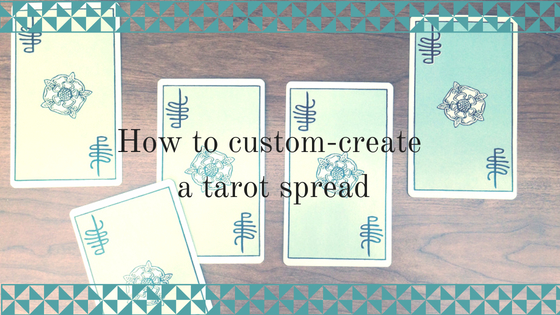When I read tarot for my clients, I almost always use customized spreads. Putting together a spread can be an enjoyable creative process, plus it allows me to really hone in on each specific seeker’s needs. In this post, I’m sharing the process I use to create a tarot spread. It’s pretty straightforward, but perhaps it will be useful to someone!
Before I move forward with a reading, I always invite the seeker to share their story with me. When I first started reading tarot, I’d advise people to come into the reading with a specific question, but I abandoned that a few years ago. For my reading style, it has proven more useful to just ask what has led them to seek a reading, inviting them to share as much or as little as they’d like.
Once I’ve heard back from the seeker, I hone in on certain things they’ve mentioned that feel particularly ripe for exploration. This determines a lot of the spread positions I use. For example, if someone mentions they’ve been feeling drained and tired lately, I might include a spread position for considering the root cause of the tiredness, and perhaps another spread position for advice on navigating that energy. This is just about actively listening to what a seeker shares and using your intuition to hone in on correlating spread positions to integrate.
Although I really like my spreads to be focused and concise, I also find it’s really useful to incorporate open-ended spread positions. Here are some common spread positions I use that can add value to almost any tarot spread:
- opening messages
- themes
- challenges
- strengths
- advice
- unseen factors
- energy to release
- energy to bring in
- unconscious influences
- conscious influences
- current energy at work
- advice on navigating current energy
- lessons available
- blessings
- blocks
- synthesis
- closing messages
I’ve found that my ‘sweet spot’ for spread crafting is 3-8 positions. Occasionally I will do a bigger spread, but sometimes bigger spreads feel a bit too bloated for me. This is something that varies from reader to reader, so if you’re just starting out with creating spreads, play around and see what feels right for you.
Once I’ve selected all the spread positions, I then put them in an order that ‘flows’ so that the spread can read as a sort of story. That probably goes without saying, but as an example: starting with opening messages, then moving into the core spread positions, then perhaps rounding it out with more open-ended messages and a closing message.
At this point, some readers like to arrange their spread into a specific shape that fits the theme of the reading. I like this idea, but in application I honestly hardly do this – I usually just lay the cards out however they fit on my desk! But if you’re feeling particularly creative, it’s nice to find a visually appealing way to present your spread.
And that’s about it! At this point, the spread is finalized and the reading can commence. And if you’ve created a really good spread, you’re on the right track to offering a really powerful reading. Happy spread crafting!



 I'm a tarot reader and mentor.
I'm a tarot reader and mentor. 